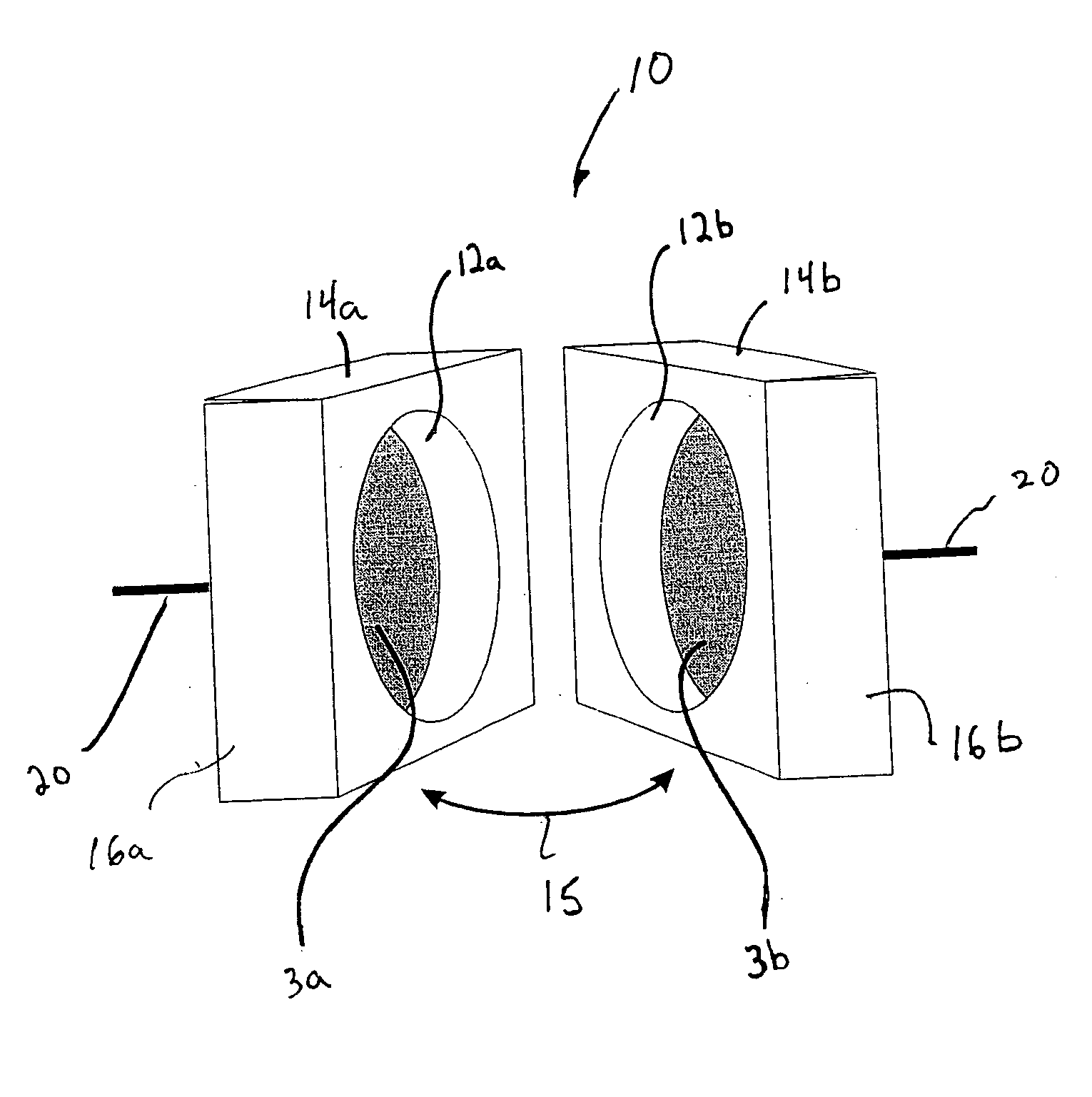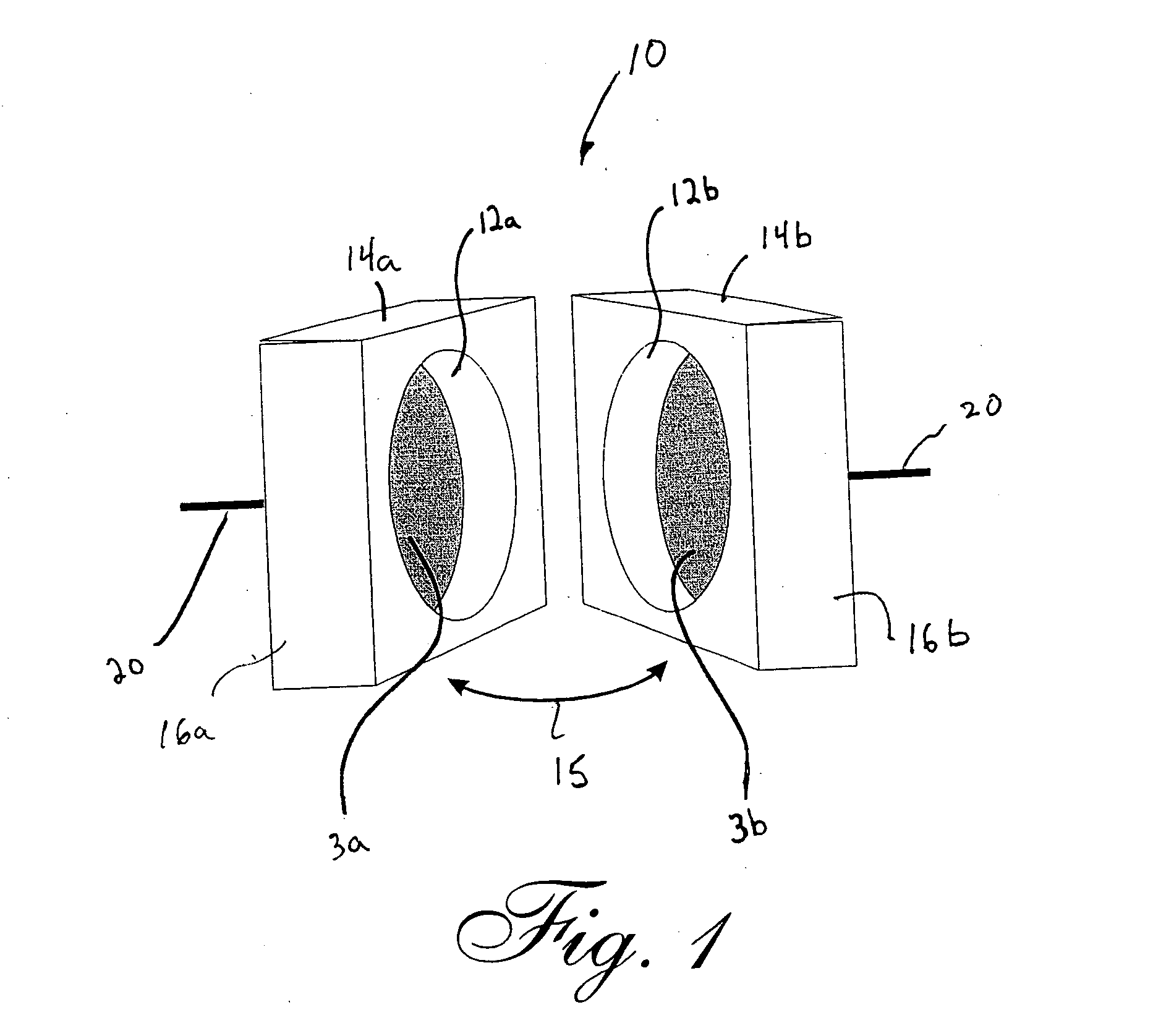Micro neutron detectors
a technology of neutron detectors and micro-nuclear particles, which is applied in the field of radiological detectors, can solve the problems of clear lack of such coatings in the openings, and achieve the effect of easy discrimination
- Summary
- Abstract
- Description
- Claims
- Application Information
AI Technical Summary
Benefits of technology
Problems solved by technology
Method used
Image
Examples
example
[0091] Prototype micro neutron detectors were manufactured from machined aluminum oxide (alumina) pieces, and each detector was embodied as a plurality of three fastened supports, such as representatively shown in FIGS. 3-5. The interior support included an opening that, when fastened to the exterior supports, defined a generally cylindrical gas pocket having a 2-mm diameter and 1-mm thickness. To make the detector, compositions of Ti / Au were evaporated on each of the exterior supports to form an alumina cathode and anode. In turn, the support having the cathode was aligned and fastened to the interior support with an epoxy. A dilute solution of Uranyl-Nitrate (neutron reactive material) was then applied over the Ti / Au forming the cathode and baked with an infrared lamp for 5 minutes. Afterwards, the fastened interior support and the exterior support forming the cathode, including the baked uranyl-nitrate, were inserted into a glove box, of sorts, which was backfilled with P-10 gas....
PUM
 Login to View More
Login to View More Abstract
Description
Claims
Application Information
 Login to View More
Login to View More - R&D
- Intellectual Property
- Life Sciences
- Materials
- Tech Scout
- Unparalleled Data Quality
- Higher Quality Content
- 60% Fewer Hallucinations
Browse by: Latest US Patents, China's latest patents, Technical Efficacy Thesaurus, Application Domain, Technology Topic, Popular Technical Reports.
© 2025 PatSnap. All rights reserved.Legal|Privacy policy|Modern Slavery Act Transparency Statement|Sitemap|About US| Contact US: help@patsnap.com



